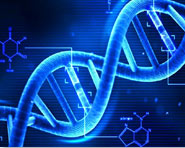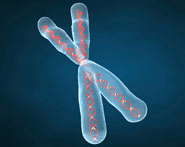


 النبات
النبات
 الحيوان
الحيوان
 الأحياء المجهرية
الأحياء المجهرية
 علم الأمراض
علم الأمراض
 التقانة الإحيائية
التقانة الإحيائية
 التقنية الحيوية المكروبية
التقنية الحيوية المكروبية
 التقنية الحياتية النانوية
التقنية الحياتية النانوية
 علم الأجنة
علم الأجنة
 الأحياء الجزيئي
الأحياء الجزيئي
 علم وظائف الأعضاء
علم وظائف الأعضاء
 الغدد
الغدد
 المضادات الحيوية
المضادات الحيوية|
Read More
Date: 8-12-2021
Date: 11-9-2021
Date: 28-11-2021
|
Oxidative Decarboxylation of α-ketoglutarate in TCA
The irreversible conversion of α-ketoglutarate to succinyl CoA is catalyzed by the α-ketoglutarate dehydrogenase complex, a protein aggregate of multiple copies of three enzymes (Fig. 1). The mechanism of this oxidative decarboxylation is very similar to that used for the conversion of pyruvate to acetyl CoA by the PDHC. The reaction releases the second CO2 and produces the second NADH of the cycle. The coenzymes required are TPP, lipoic acid, FAD, NAD+, and CoA. Each functions as part of the catalytic mechanism in a way analogous to that described for the PDHC (see p. 110). The large negative ΔG0 of the reaction favors formation of succinyl CoA, a high-energy thioester similar to acetyl CoA. The α-ketoglutarate dehydrogenase complex is inhibited by its products, NADH and succinyl CoA, and activated by Ca2+. However, it is not regulated by phosphorylation/dephosphorylation reactions as described for the PDHC. [Note: α-Ketoglutarate is also produced by the oxidative deamination and transamination of the amino acid glutamate .]
Figure 1: Formation of malate from α-ketoglutarate. FAD(H2) and NAD(H) = flavin and nicotinamide adenine dinucleotides; GDP and GTP = guanosine diand triphosphates; ~ = high-energy bond; CoA = coenzyme A.



|
|
|
|
كل ما تود معرفته عن أهم فيتامين لسلامة الدماغ والأعصاب
|
|
|
|
|
|
|
ماذا سيحصل للأرض إذا تغير شكل نواتها؟
|
|
|
|
|
|
|
جامعة الكفيل تناقش تحضيراتها لإطلاق مؤتمرها العلمي الدولي السادس
|
|
|